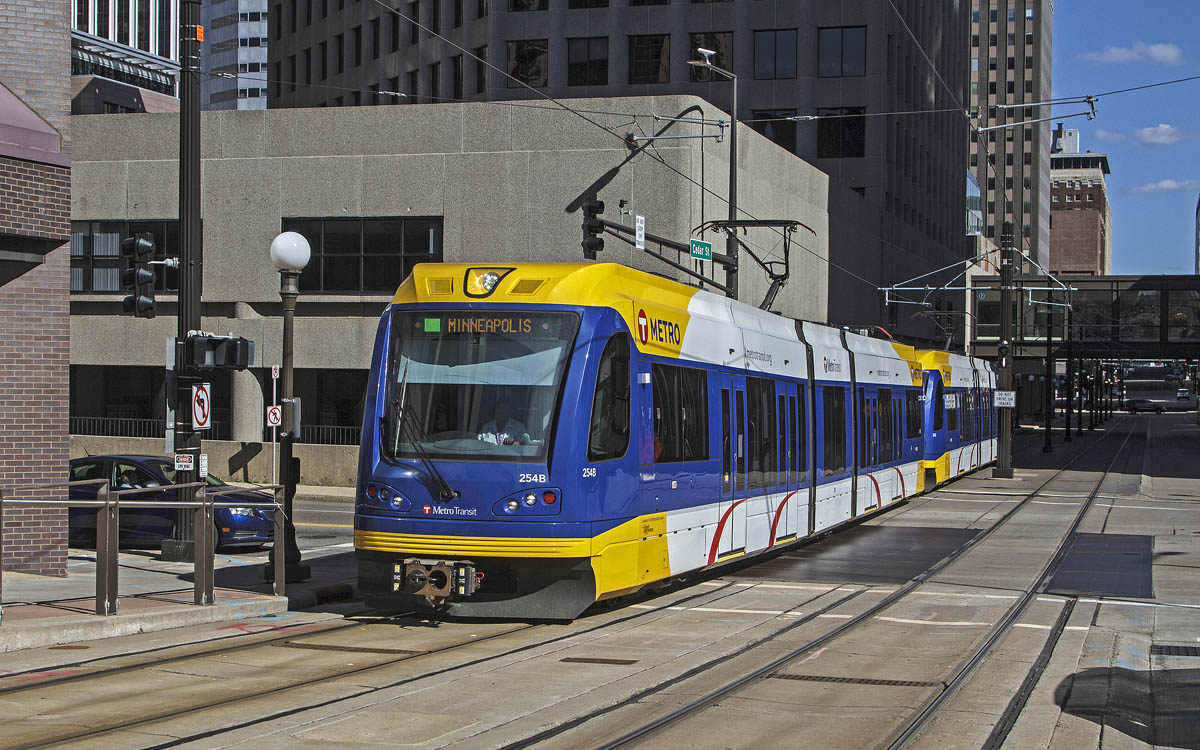Nationally, transit ridership is down. Through the third quarter of 2018, transit ridership slipped by about 3 percent, driven largely by a steady drop in bus ridership and low gas prices, according to transit officials. So why did the Twin Cities see an increase?
One reason is that a fare increase in October 2017 drove down ridership, a common result as riders resist reaching deeper in their pockets to ride. Over time, the effect of the fare increase faded as riders grew accustomed to higher fares and returned to transit.
A bigger reason is the Twin Cities metro area’s changing demographics. As baby boomers age, the number of seniors in the metro area age 65 and older continues to balloon, growing from more than 280,000 in 2010 (11 percent of the population) to nearly 380,000 in 2017 (13.4 percent of the population). As they age rather than driving many of the boomers turned to bus and rail service.
Metro area transit users will have another light rail line to ride in the next few years. A 14.5-mile extension of the Green Line is under construction that will extend the line from Minneapolis to the southwest connecting suburban St. Louis Park, Hopkins, Minnetonka, and Eden Prairie. It is expected to open in 2023.
Both the Blue and Green lines connect to the Northstar commuter rail line at Target Field Station in downtown Minneapolis adjacent to the Minnesota Twins baseball stadium. The 40-mile Northstar line operates over BNSF Railway between Minneapolis and Big Lake and opened for service in 2009.















Additionally, 10% of building the Interstate highways came from the states per the original Interstate Act. I also believe that upkeep is largely the responsibility of the states so it is unclear how much their gas taxes have covered the cost. Nor does gas tax money go to cover the cost of the “crtitical” connections to our highways– local roads and arterials.
A large part of the social engineering that was done by interstate construction was by how and where they were located. How many wealthy neighborhoods were involuntarily affected by this? Meanwhile, poor neighborhoods were sliced, diced and isolated by those who did not give a damn about the people that lived there. Robert Moses is a good example of that sort of person, but there were many more and did their damage in many of our cities.
Not so Mr. L. Gasoline taxes (Federal & State) only meet 80%-85% of the costs to maintain or expand the Interstate system. Rest come from Federal general fund. With cars mandated to get better mileage, less gasoline taxes are being collected any that will accelerate. With Electric cats (Tessa), “NO” taxes are being collected plus people are getting Gederal tax deductions on top of that.
Congress has basically implied that the highways will decay at a faster rate
Mr. Landey if that is true then why has the Hwy Trust fund had to bailed out every year since about 2007 with funds from the General Revenue – look it up….
Galen – The Interstate carries far more people and is almost entirely funded by user fees.
I’m happy the Twin Cities LRT is a success. Most LRTs are; some are not.
I remember the opponents of LRT in the Twin Cities putting up billboards calling it “social engineering” ya right like the interstate system wasn’t !
I’m still amused to recall how some people believed “no one” would ride the LRT in the Cities, yet it continues to exceed expectations.